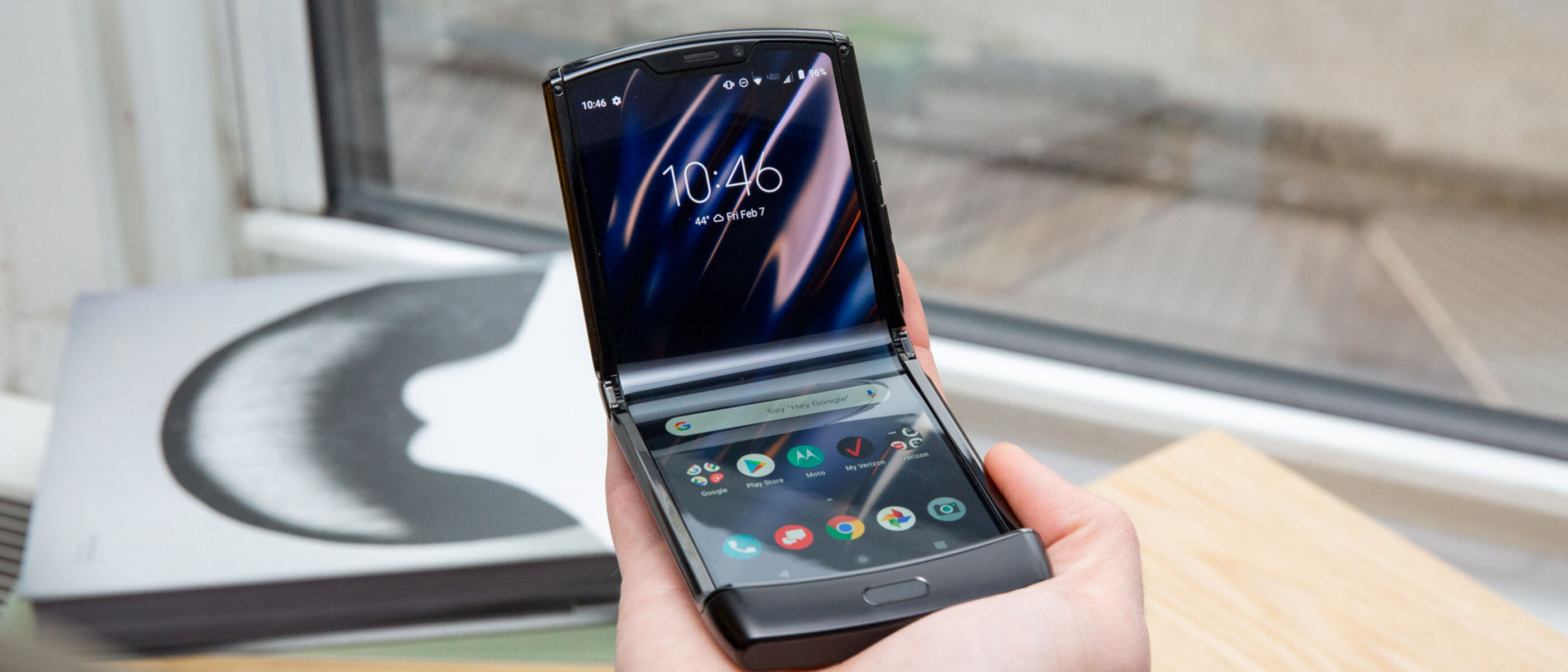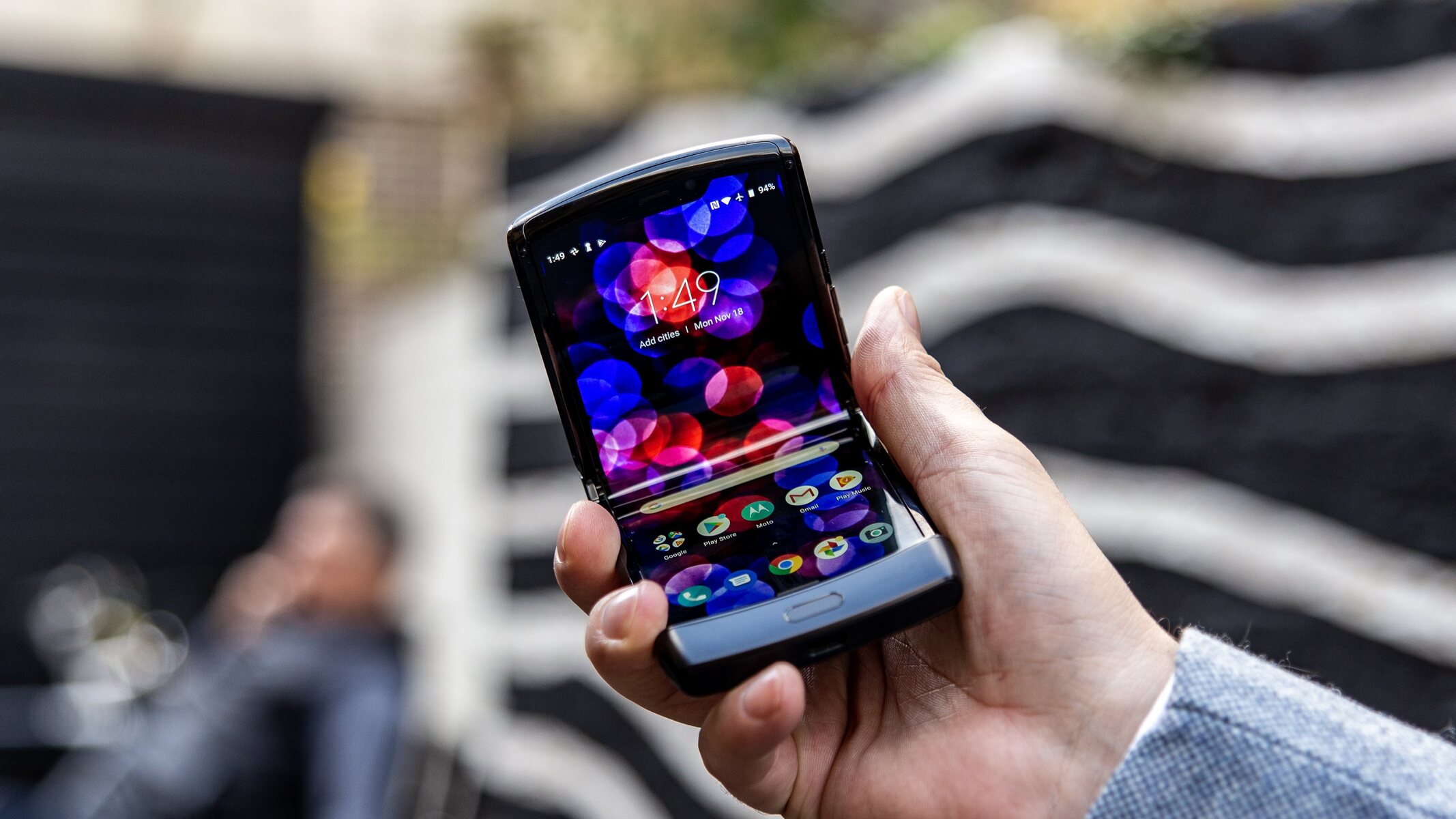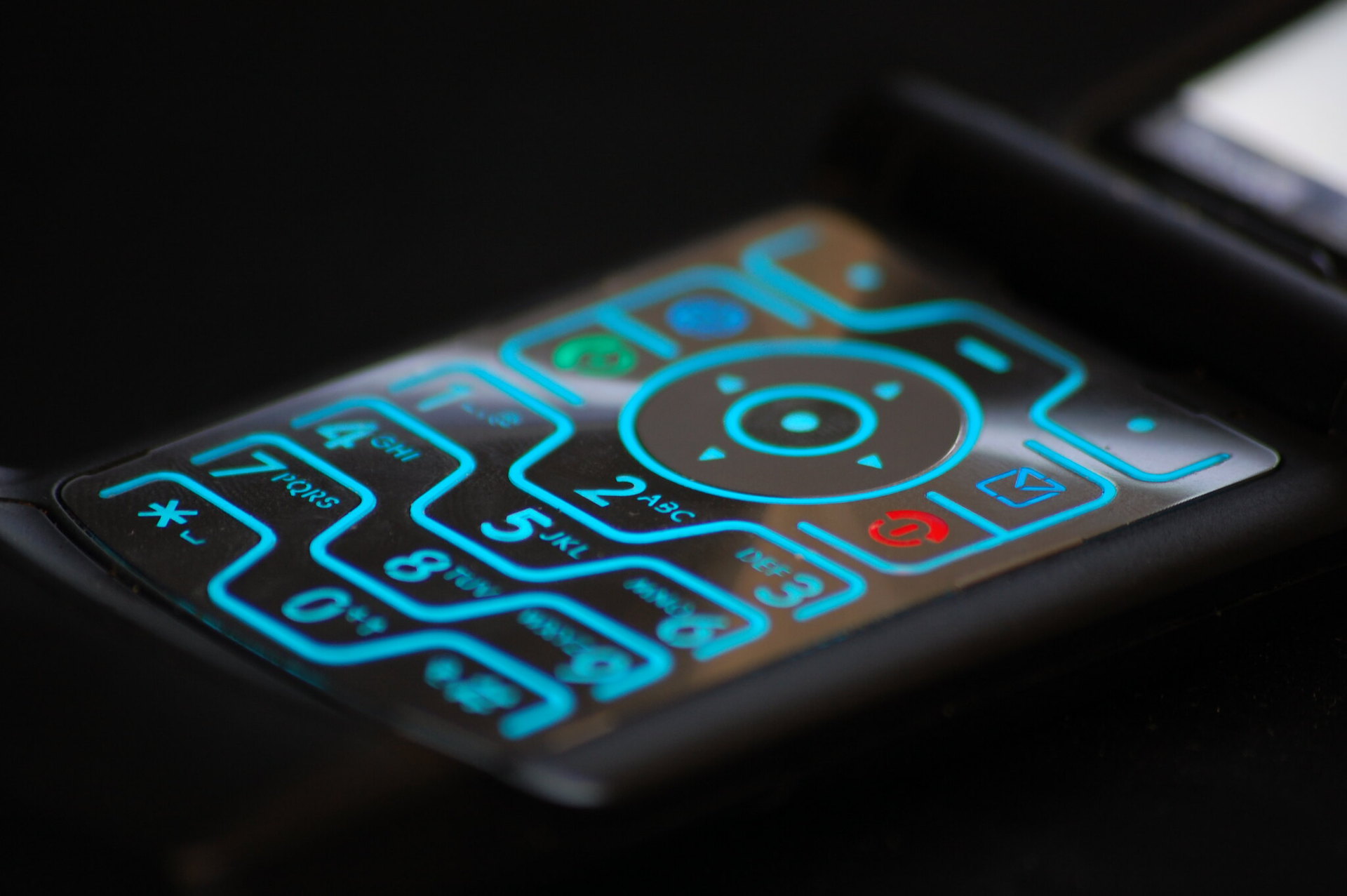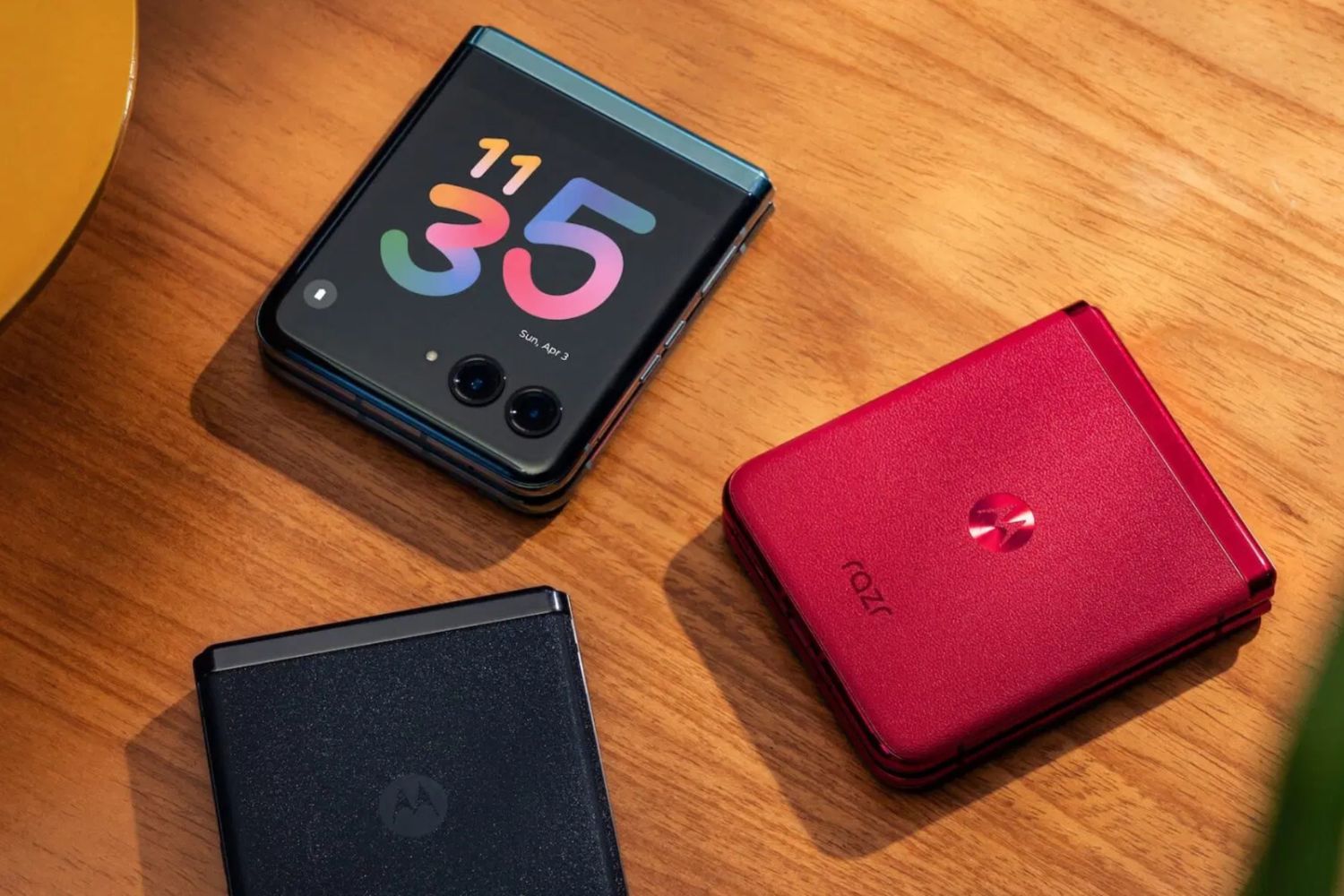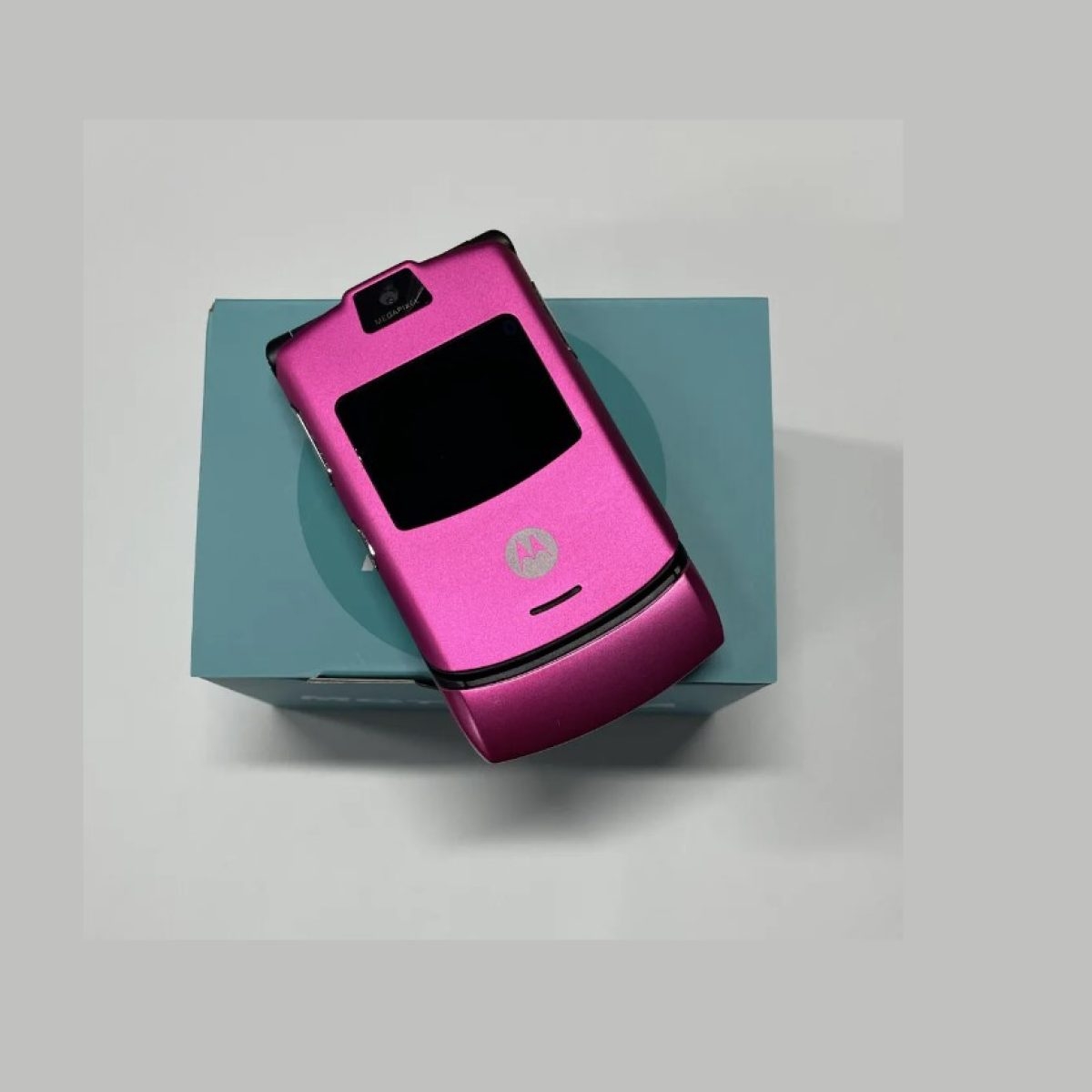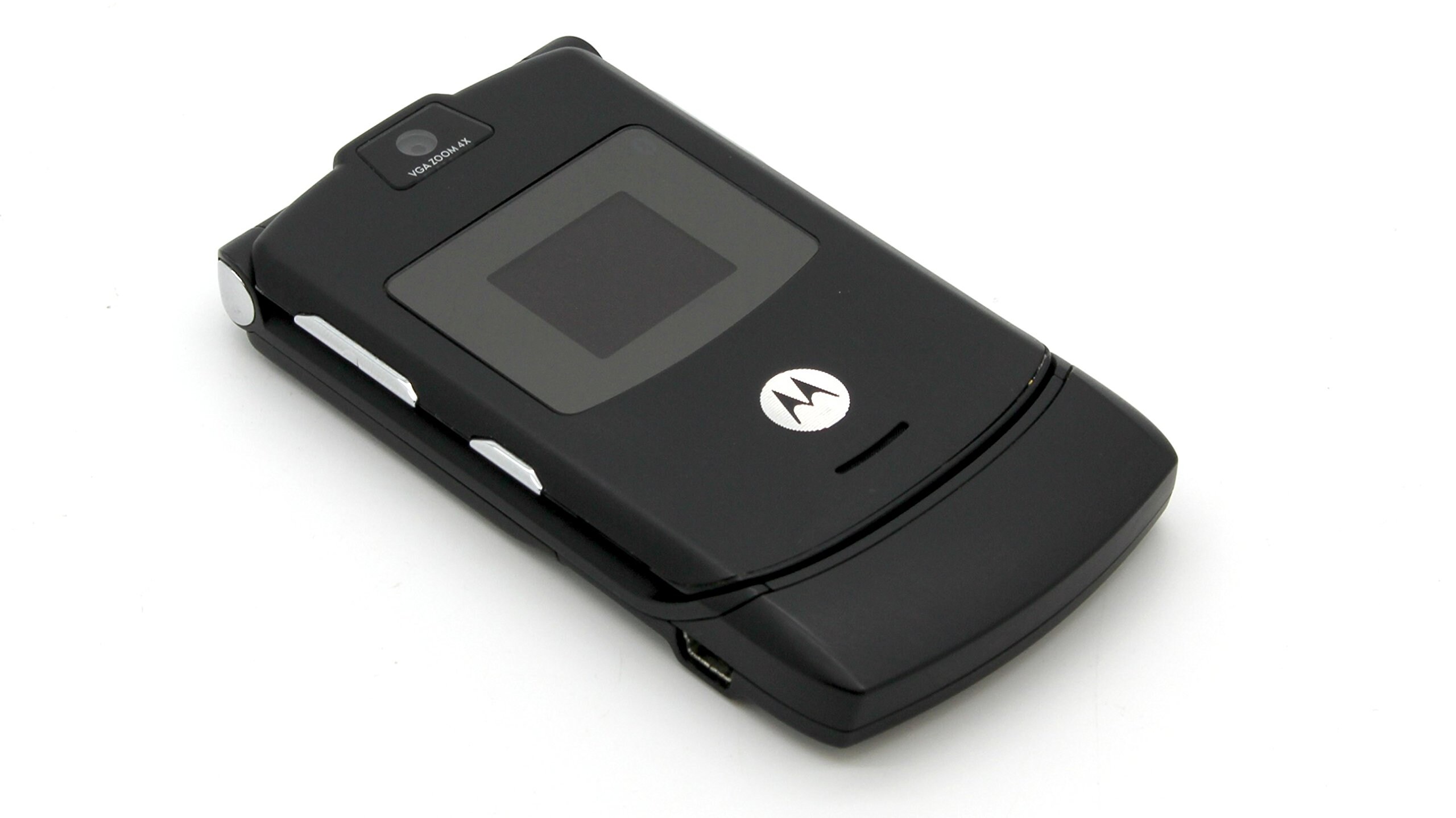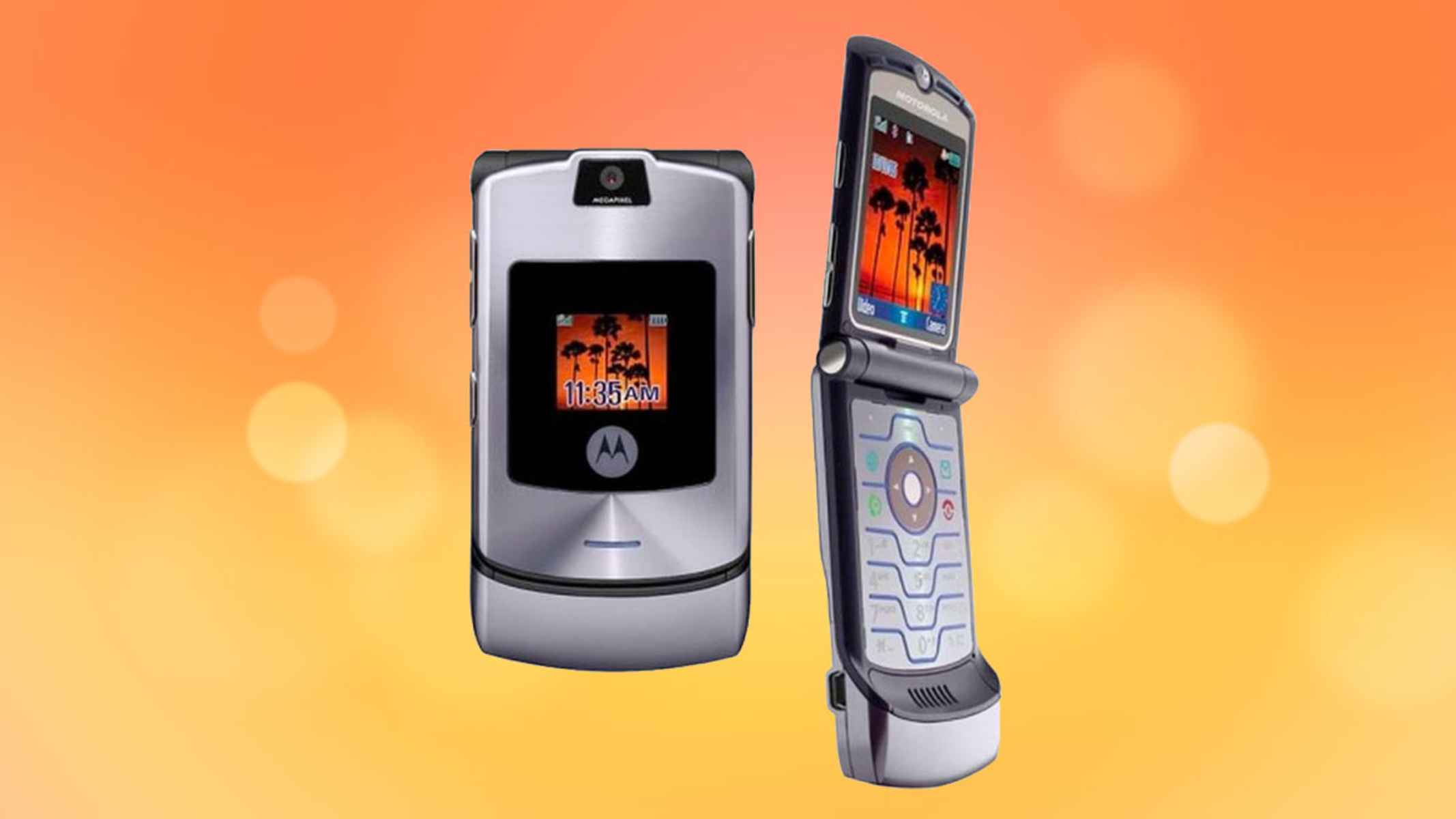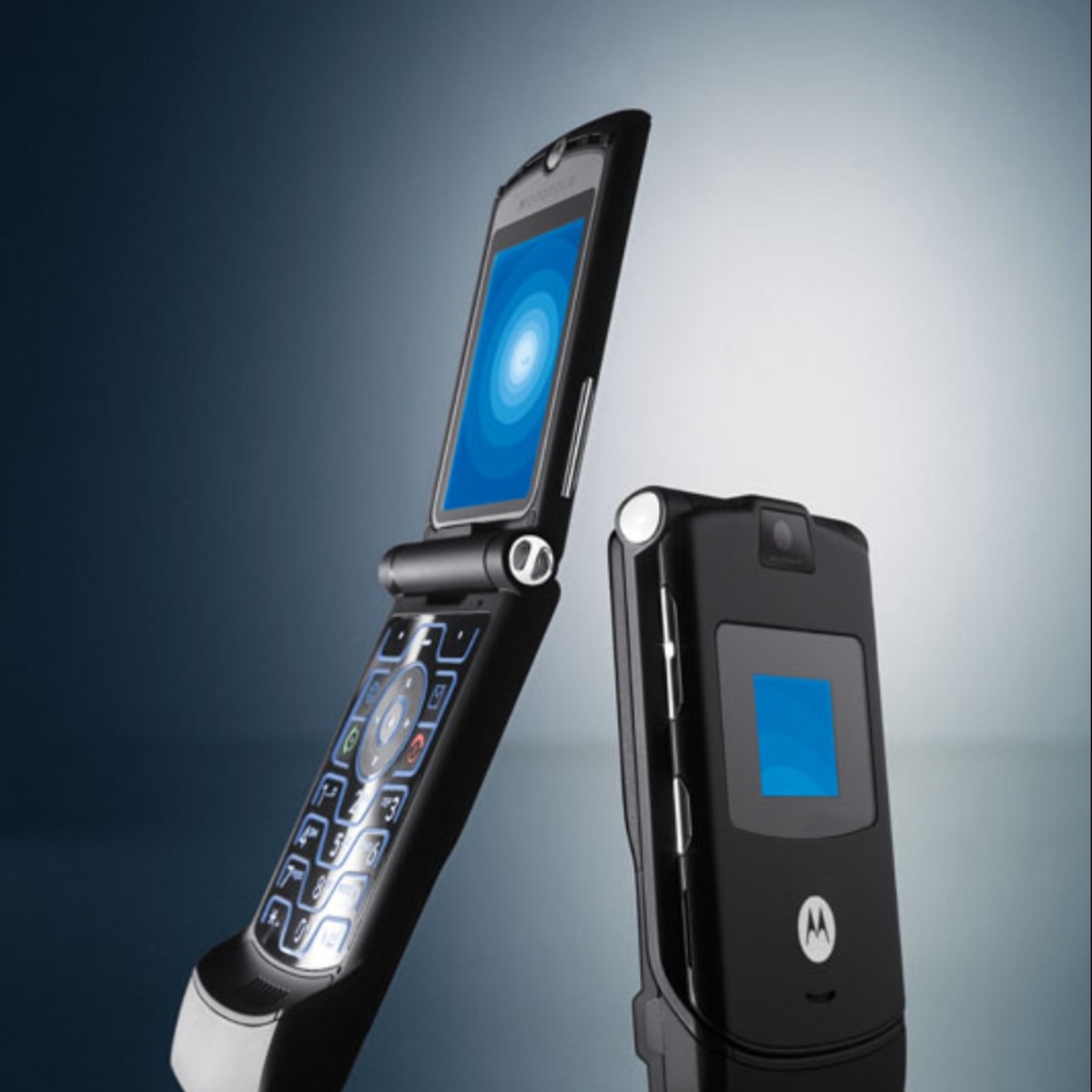Introduction
The Motorola Razr V3 is a timeless classic that revolutionized the mobile phone industry with its iconic design and innovative features. Launched in 2004, it quickly became a cultural phenomenon, captivating users with its sleek profile and cutting-edge technology. As one of the slimmest and most stylish phones of its time, the Razr V3 set a new standard for mobile devices, blending fashion and functionality in a way that had never been seen before.
With its striking metallic keypad and ultra-thin form factor, the Razr V3 captured the imagination of consumers worldwide, earning a reputation as a symbol of sophistication and modernity. Its clamshell design, coupled with a vibrant external display, made it a fashion statement that transcended the realm of telecommunications. The phone's allure extended beyond its technical capabilities, embodying a lifestyle choice for those who sought elegance and innovation in their everyday devices.
The Razr V3 was not just a phone; it was a cultural icon that symbolized the convergence of style and technology. Its release marked a turning point in the mobile industry, demonstrating that a device could be both functional and fashionable. The sleek, anodized aluminum body and precision craftsmanship made it a coveted accessory, elevating the status of mobile phones from mere communication tools to coveted fashion accessories.
In the following sections, we will delve into the various aspects of the Motorola Razr V3, exploring its design, display, camera, battery life, connectivity, memory, storage, and additional features. By examining these elements, we can gain a comprehensive understanding of the enduring appeal and technological prowess of this iconic device. Let's embark on a journey to uncover the timeless allure and remarkable capabilities of the Motorola Razr V3.
Design and Build
The Motorola Razr V3 is a testament to exquisite design and meticulous craftsmanship. Its iconic clamshell form factor, measuring a mere 13.9mm in thickness, set a new standard for slim and stylish mobile devices. The sleek, anodized aluminum body exudes sophistication, while the precision engineering ensures a seamless fusion of form and function. The Razr V3's attention to detail is evident in every aspect of its design, from the metallic keypad to the smooth hinge mechanism that exudes a sense of refinement and durability.
The phone's exterior is adorned with a vibrant external display, adding a touch of modernity to its classic silhouette. This secondary display not only enhances the phone's visual appeal but also provides convenient access to essential information such as caller ID, time, and battery status. The Razr V3's compact and lightweight construction makes it a joy to hold and carry, reflecting a harmonious balance between portability and elegance.
Furthermore, the Razr V3's design extends beyond its physical attributes, encapsulating a sense of timeless sophistication that transcends trends and fads. Its enduring appeal lies in its ability to seamlessly blend cutting-edge technology with a captivating aesthetic, making it a timeless classic that continues to captivate admirers across generations.
In summary, the design and build of the Motorola Razr V3 represent a pinnacle of mobile device craftsmanship, where form and function converge to create an enduring icon of style and innovation. Its slim profile, premium materials, and meticulous attention to detail set it apart as a timeless symbol of sophistication and technological prowess. The Razr V3's design legacy continues to inspire contemporary mobile devices, serving as a reminder of the transformative power of visionary design and meticulous engineering.
Display
The Motorola Razr V3 boasts a visually captivating display that complements its iconic design and enhances the user experience. The phone features a vibrant 2.2-inch internal TFT display with a resolution of 176 x 220 pixels, delivering crisp and clear visuals for viewing photos, messages, and navigating the user interface. The display's compact size is perfectly suited to the Razr V3's sleek form factor, ensuring a seamless integration of style and functionality.
The internal display's vivid colors and sharp contrast contribute to an immersive viewing experience, allowing users to engage with multimedia content with remarkable clarity. Whether browsing through photos, reading text messages, or navigating the phone's menu, the display's visual prowess elevates the overall usability of the device.
In addition to the internal display, the Razr V3 features an external monochrome display that provides at-a-glance information such as caller ID, time, and battery status. This secondary display not only enhances the phone's aesthetic appeal but also offers convenient access to essential information without the need to open the clamshell design.
The Razr V3's display is not only a functional component but also a defining feature that contributes to the phone's timeless allure. Its seamless integration within the phone's slim profile underscores Motorola's commitment to blending cutting-edge technology with captivating design. The display's ability to deliver vibrant visuals within a compact form factor exemplifies the Razr V3's enduring appeal as a stylish and practical mobile device.
In summary, the display of the Motorola Razr V3 embodies a harmonious fusion of form and function, enhancing the user experience with its vibrant visuals and seamless integration within the phone's iconic design. Whether showcasing multimedia content or providing at-a-glance information, the Razr V3's display stands as a testament to Motorola's dedication to delivering innovative technology without compromising on style and elegance.
Camera
The Motorola Razr V3, despite being renowned for its iconic design and slim profile, also incorporates a modest yet functional camera, catering to the evolving needs of mobile users. Equipped with a 0.3-megapixel VGA camera, the Razr V3 allows users to capture spontaneous moments and preserve memories with ease. While the camera's specifications may seem modest by today's standards, it was a notable inclusion at the time of the phone's release, offering users a convenient way to document their experiences on the go.
The VGA camera, positioned above the internal display, enables users to capture still images in various lighting conditions, providing a simple yet effective means of preserving moments in a digital format. While the camera's resolution may not rival contemporary smartphone cameras, it served as a practical tool for casual photography, allowing users to immortalize everyday experiences with a level of convenience that was previously unavailable in mobile devices.
Furthermore, the Razr V3's camera interface is designed for intuitive operation, ensuring that users can swiftly access and utilize the camera function without unnecessary complexity. The camera's user-friendly interface aligns with the phone's overall ethos of blending style with practicality, offering a seamless experience for capturing and sharing moments with friends and family.
In essence, the camera of the Motorola Razr V3, while modest in resolution, represents a significant step forward in the integration of photography capabilities within mobile devices. Its inclusion reflects the evolving role of mobile phones as multifaceted tools for communication, entertainment, and documentation. The VGA camera, though humble in its specifications, contributed to the Razr V3's appeal as a versatile and stylish device that catered to the diverse needs of mobile users.
The camera of the Razr V3, while not designed to compete with dedicated digital cameras, served as a testament to Motorola's commitment to enhancing the mobile user experience through thoughtful and practical features. Its inclusion marked a pivotal moment in the evolution of mobile devices, demonstrating the potential for integrating photography capabilities into compact and stylish form factors. The camera of the Razr V3, though often overshadowed by its design and form factor, remains a noteworthy aspect of the phone's enduring legacy.
Battery Life
The battery life of the Motorola Razr V3 is a crucial aspect of its overall usability, ensuring that users can rely on the device for extended periods without the need for frequent recharging. Equipped with a removable 680mAh lithium-ion battery, the Razr V3 delivers dependable performance, striking a balance between power efficiency and practical usage.
Despite the phone's slim profile and compact form factor, the battery's capacity is optimized to provide adequate power for everyday use. The lithium-ion technology employed in the Razr V3's battery ensures a favorable balance between energy density and weight, contributing to the phone's lightweight construction without compromising on longevity.
The Razr V3's battery life is tailored to accommodate the diverse needs of mobile users, offering reliable performance for voice calls, text messaging, and occasional multimedia usage. The phone's power management system is designed to maximize efficiency, allowing users to enjoy extended usage without the inconvenience of frequent recharging.
Furthermore, the removable nature of the Razr V3's battery provides added convenience, enabling users to carry spare batteries for extended trips or situations where access to charging outlets may be limited. This flexibility aligns with the phone's ethos of practicality and user-centric design, ensuring that users can adapt to varying usage scenarios without being tethered to a power source.
In summary, the battery life of the Motorola Razr V3 reflects a thoughtful approach to power management, delivering reliable performance within a slim and stylish form factor. The phone's lithium-ion battery, with its balance of capacity and efficiency, underscores Motorola's commitment to providing a seamless and dependable user experience. Whether for everyday communication or occasional multimedia usage, the Razr V3's battery life remains a testament to the phone's enduring appeal as a practical and reliable mobile device.
Connectivity
The Motorola Razr V3, despite its release over a decade ago, featured a comprehensive set of connectivity options that catered to the diverse communication needs of mobile users. At the forefront of its connectivity capabilities was its support for GSM networks, enabling seamless voice calls and text messaging across various regions. The phone's compatibility with GSM networks positioned it as a versatile communication tool for users who required global connectivity and mobility.
In addition to its GSM support, the Razr V3 also featured Bluetooth technology, allowing users to wirelessly connect with compatible devices for file sharing and hands-free communication. The inclusion of Bluetooth functionality represented a forward-looking approach to connectivity, offering users a convenient and cable-free means of exchanging data and engaging in hands-free conversations. This feature was particularly noteworthy at the time of the Razr V3's release, as Bluetooth technology was still emerging as a standard for wireless communication.
Furthermore, the Razr V3's support for GPRS (General Packet Radio Service) facilitated basic internet connectivity, enabling users to access mobile web services and send/receive emails on the go. While the phone's internet capabilities were modest compared to contemporary smartphones, its GPRS support represented a significant step forward in providing users with on-the-go access to essential online services.
The phone's USB connectivity allowed for seamless data transfer between the Razr V3 and compatible devices, further enhancing its versatility as a communication and data management tool. The USB interface provided a reliable and straightforward method for users to synchronize their contacts, calendars, and multimedia content with their personal computers, contributing to a seamless user experience.
In summary, the connectivity features of the Motorola Razr V3 exemplified a forward-thinking approach to mobile communication, offering users a comprehensive set of tools to stay connected and exchange data in a wireless and mobile-centric world. The phone's support for GSM networks, Bluetooth technology, GPRS, and USB connectivity underscored its versatility and adaptability, positioning it as a reliable and practical communication companion for users on the go.
Memory and Storage
The Motorola Razr V3, despite its slender profile and emphasis on style, incorporated a practical approach to memory and storage, catering to the evolving needs of mobile users. The phone featured 5.5 MB of internal storage, providing users with ample space to store contacts, messages, and essential multimedia content. While the internal storage capacity may seem modest by today's standards, it was well-suited to the phone's primary functions, ensuring that users could manage their essential data without compromise.
In addition to its internal storage, the Razr V3 also supported external memory expansion through a microSD card slot, allowing users to augment the phone's storage capacity according to their requirements. This flexibility empowered users to store additional photos, music, and videos, enhancing the phone's multimedia capabilities and adaptability to diverse usage scenarios. The support for external memory expansion represented a forward-looking approach to storage, acknowledging the growing importance of multimedia content in the mobile user experience.
The phone's memory management system was designed to optimize performance and ensure seamless operation, allowing users to navigate their stored data with ease. Whether accessing contacts, messages, or multimedia files, the Razr V3's memory and storage capabilities were tailored to deliver a user-friendly and efficient experience, aligning with the phone's ethos of practicality and usability.
Furthermore, the Razr V3's memory and storage features were complemented by its intuitive user interface, which facilitated effortless data management and organization. Users could easily access and manage their stored content, ensuring that essential data was readily available whenever needed. The phone's memory and storage capabilities, coupled with its user-friendly interface, contributed to a seamless and practical user experience, underscoring Motorola's commitment to delivering a device that excelled in both form and function.
In summary, the memory and storage features of the Motorola Razr V3 reflected a thoughtful approach to data management, providing users with a balance of internal storage and external memory expansion to accommodate their diverse needs. The phone's memory and storage capabilities, combined with its user-friendly interface, contributed to a practical and efficient user experience, reinforcing the Razr V3's position as a versatile and reliable mobile companion.
Additional Features
In addition to its iconic design, impressive display, and practical functionalities, the Motorola Razr V3 boasted a range of additional features that further enhanced its appeal and utility. These features, though often overshadowed by the phone's design legacy, played a significant role in shaping the user experience and solidifying the Razr V3's status as a versatile and forward-thinking mobile device.
One notable additional feature of the Razr V3 was its integrated speakerphone, which allowed users to engage in hands-free conversations with ease. The speakerphone functionality, coupled with the phone's sleek profile, offered a convenient and practical communication solution for users who required multitasking capabilities while on calls. This feature underscored the Razr V3's commitment to user-centric design, providing a seamless and hands-free communication experience.
Furthermore, the Razr V3 incorporated a range of productivity tools, including a calendar, alarm clock, and calculator, empowering users to manage their schedules and tasks on the go. The inclusion of these essential utilities aligned with the phone's ethos of practicality, ensuring that users could rely on the Razr V3 as a multifaceted tool for both communication and organization. These productivity features, though seemingly modest, contributed to the phone's versatility and adaptability to diverse user needs.
The Razr V3 also featured a dedicated voice memo recorder, allowing users to capture spontaneous thoughts and reminders with ease. This practical addition provided users with a convenient means of preserving important information on the go, further enhancing the phone's utility as a comprehensive communication and productivity tool.
Additionally, the Razr V3's support for custom ringtones and wallpapers allowed users to personalize their device, adding a touch of individuality to their mobile experience. This customization feature reflected the phone's commitment to personal expression and user empowerment, enabling users to tailor their device to reflect their unique preferences and personality.
In summary, the additional features of the Motorola Razr V3, though often overlooked, contributed significantly to the phone's overall appeal and practicality. From hands-free communication capabilities to productivity tools and personalization options, these features enhanced the Razr V3's utility as a versatile and user-centric mobile device, further solidifying its status as a timeless classic that transcended mere communication to embody a lifestyle choice.
Conclusion
In conclusion, the Motorola Razr V3 stands as a timeless testament to the convergence of style and technology, embodying a harmonious blend of iconic design, practical functionality, and enduring appeal. From its sleek clamshell form factor to its vibrant display and modest yet functional camera, the Razr V3 captured the imagination of users worldwide, transcending its status as a mere communication device to become a cultural icon.
The Razr V3's design and build, characterized by its slim profile and premium materials, exemplify Motorola's commitment to meticulous craftsmanship and visionary design. Its enduring allure as a fashion statement and technological marvel continues to resonate across generations, serving as a reminder of the transformative power of visionary design and meticulous engineering.
Furthermore, the phone's display, though compact, delivers vibrant visuals that enhance the user experience, showcasing photos and messages with remarkable clarity. The inclusion of an external display further underscores the phone's practicality and modernity, offering at-a-glance information without compromising its iconic design.
Despite its modest VGA camera, the Razr V3's photography capabilities represented a significant step forward in integrating multimedia functionalities within mobile devices. The camera's user-friendly interface and intuitive operation catered to users' evolving needs, providing a convenient means of capturing and sharing moments on the go.
The phone's battery life, connectivity options, memory, and additional features further solidify its position as a versatile and reliable mobile companion. From dependable power management to comprehensive connectivity and practical productivity tools, the Razr V3 excelled in delivering a seamless and user-centric experience.
In essence, the Motorola Razr V3 transcends its status as a mobile phone, embodying a lifestyle choice for those who seek elegance, innovation, and practicality in their everyday devices. Its enduring legacy continues to inspire contemporary mobile devices, serving as a timeless reminder of the transformative power of visionary design and meticulous engineering. The Razr V3 remains an enduring symbol of sophistication and technological prowess, leaving an indelible mark on the mobile industry and the hearts of users worldwide.









